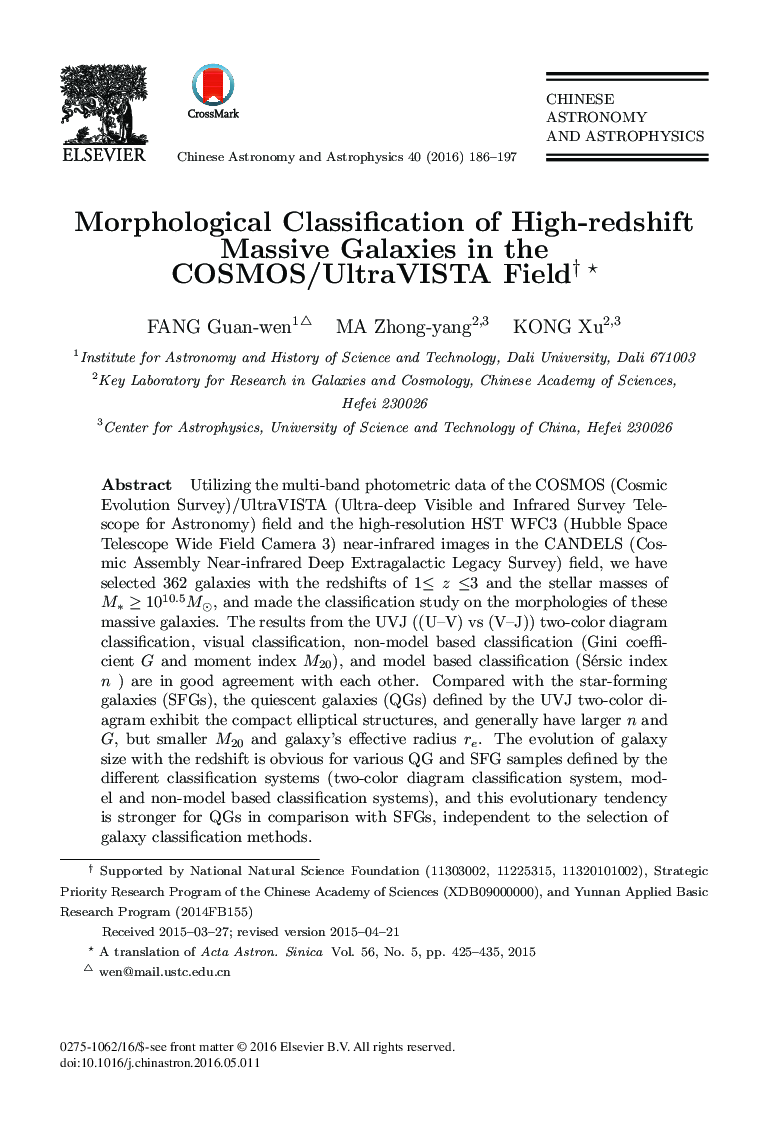| Article ID | Journal | Published Year | Pages | File Type |
|---|---|---|---|---|
| 1771679 | Chinese Astronomy and Astrophysics | 2016 | 12 Pages |
Utilizing the multi-band photometric data of the COSMOS (Cosmic Evolution Survey)/UltraVISTA (Ultra-deep Visible and Infrared Survey Telescope for Astronomy) field and the high-resolution HST WFC3 (Hubble Space Telescope Wide Field Camera 3) near-infrared images in the CANDELS (Cosmic Assembly Near-infrared Deep Extragalactic Legacy Survey) field, we have selected 362 galaxies with the redshifts of 1≤ z ≤3 and the stellar masses of M* ≥ 1010.5M⊙, and made the classification study on the morphologies of these massive galaxies. The results from the UVJ ((U–V) vs (V–J)) two-color diagram classification, visual classification, non-model based classification (Gini coefficient G and moment index M20), and model based classification (Sérsic index n) are in good agreement with each other. Compared with the star-forming galaxies (SFGs), the quiescent galaxies (QGs) defined by the UVJ two-color diagram exhibit the compact elliptical structures, and generally have larger n and G, but smaller M20 and galaxy's effective radius re. The evolution of galaxy size with the redshift is obvious for various QG and SFG samples defined by the different classification systems (two-color diagram classification system, model and non-model based classification systems), and this evolutionary tendency is stronger for QGs in comparison with SFGs, independent to the selection of galaxy classification methods.
